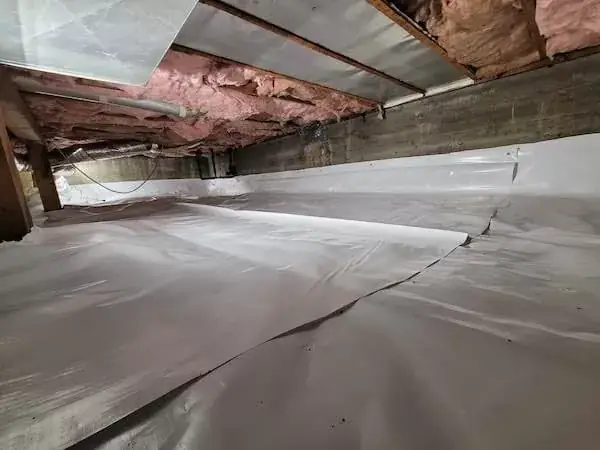Hey there, new homeowner! First off, congrats on your new digs! Now that you’re settling in, let’s talk about something crucial: your basement and/or crawl space. Whether you get a lot of rain in your area or not, basement waterproofing is key to protecting your investment and keeping your home safe and sound for the long haul. Here’s the lowdown on basement waterproofing, especially for folks new to homeownership:
Understanding Basement Waterproofing
Simply put, basement waterproofing is all about keeping water out to prevent issues like mold, structural damage, and a plummeting property value. Nobody wants a soggy basement!
Signs You Need Waterproofing
Even if your basement seems dry now, keep your eyes peeled for funky smells, powdery stuff on the walls (that’s efflorescence), damp spots, or any cracks showing up. These are red flags that water might be trying to sneak in.
Types of Waterproofing Systems
There are a few ways to go about waterproofing, depending on your home’s setup:
- Interior Sealants and Coatings: Slap these on the inside walls to block out moisture. But don’t expect them to work (they don’t).
- Exterior Waterproofing Membranes: Install these on the outside walls generally only during construction to fend off water. Always combined with a drainage system.
- French Drains and Sump Pumps: These bad boys redirect water away from your foundation or pump it out altogether. Which is why a sump pump is typically recommended.
- Crawl Space Waterproofing: If you’ve got a crawlspace, seal it up tight to keep moisture at bay.
Picking the right method depends on how your home’s built, where you live, and any water issues you’ve already spotted.
DIY vs. Professional Waterproofing
Sure, you can handle some basic stuff like checking drainage or cleaning gutters. But for the heavy lifting, like installing systems or fixing serious leaks, call in the pros. They’ve got the tools and know-how to do it right—and usually throw in a warranty for good measure.
Cost Considerations
Price tags for waterproofing can swing big time depending on how big your basement is, how bad the issues are, and which method you choose. Think of it as an investment in safeguarding your home from future headaches.
Maintenance Tips
Once your basement is waterproofed, keep it in top shape with these tips:
- Gutters and Downspouts: Keep ’em clear so water flows away from your foundation.
- Indoor Humidity: Keep it in check with a dehumidifier to dodge mold growth (aim for under 55% humidity).
- Watch for Cracks: Check walls and floors regularly for new cracks or signs of sneaky water.
Benefits of Waterproofing
Here’s why it’s worth the effort:
- Boosts Your Home’s Value: Dry basements are a big selling point.
- Healthier Air Quality: No mold means cleaner air for you and your family.
- Peace of Mind: Sleep easy knowing your basement isn’t turning into a mini swimming pool.
As a new homeowner, stay on top of signs of trouble, choose your waterproofing wisely, and don’t hesitate to call in the pros when you need backup. Protect your new investment today for a worry-free tomorrow!

